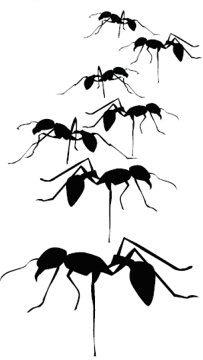From The Desk of
Arthur LazerowRealtors need to know as much as possible
about the things they sell, those pesky homes that give us so much
trouble. One aspect of understanding homes is to know the proper
nomenclature. If a Realtor does not know the difference between a
rake board and a stringer board, or a lug nut versus a “numb nut,”
confusion reins.
There are hundreds of different components in a house. Go to Alban’s
website, albaninspect.com, click on RESOURCES, and at the bottom is
a tab for the diagram of a home with each component identified. The
diagram is printable, so print it our and keep it handy at your
desk.
Here is a difficult differentiation. What is the difference between
a chimney, a flue and a vent? Last month’s ASHI Reporter contained a
long article on this subject. By the time I finished the article, I
was crosseyed. In general, all three taken together are vertical
structures that provide a path for gases to be directed safely out
of the home. Does a clothes washer have a vent or a flue? It
probably does not have a chimney!
The grandfather term is FLUE. Any structure through which combustion
products travel is a flue. A chimney is a site or factory built
structure that handles very hot gas from combustion. It has a flue
running up through it. A vent is a flue that carries gas or oil
combustion gases.
Now hear this. A clothes drier is not vented. A gas dryer, just like
a gas oven, has no vent for the combustion products, since they burn
cleanly. However, warm air and lint not trapped by the filter are
exhausted, so the correct terminology for the pipe from clothes
dryer leading to the outside is called the “dryer exhaust duct.” Got
it? Have a great summer! Go on vacation and make me a promise: leave
your cell phone at home. |
Summer Household Maintenance |
Summer is finally here. April showers and May flowers have long
past, leaving summer blooms and another opportunity to be proactive
around your home. Realtors should remind their clients that
summertime is not only vacation time, but also the opportunity to
fine tune things around the home. Here is a checklist of “to-dos”
this time of the year:
1. Burglarproof Your House. Inspect the operation of automatic
lights, timers and motion- etector systems, especially since summer
is vacation time. Break-ins can be thwarted with security measures
that prolong the burglar's time and effort. Prune shrubbery to
eliminate hiding areas. Check all site lighting for nighttime
visibility. Install security pins or window locks on all windows.
Replace Charlie bars with deadbolt type locks on sliding glass
doors. If there is no alarm system in your home, consider installing
one.
2. Clean and seal wood decks. Ideally, three consecutive warm, sunny
days will be needed to complete the job. On day one, pressure wash
and let it dr. Apply deck cleaner and scrub the deck on the second
day and let it dry 24 hours. On the third day, apply deck
preservative, such as made by Cuprinol. Let the chemical dry another
24 hours.
3. Hire a certified chimney sweep to inspect and clean chimneys and
fireplaces. Doing this task now instead of the fall allows plenty of
time for repairs before the next heating season. It's also easier to
schedule a sweep and rates are lowest during the summer.
4. Wash the exterior of the house, using ordinary garden hose
pressure and a mild detergent. Beware of the pressure washers. They
can be powerful enough to force water under the siding where it may
encourage mildew and rot. Power washing is a job for a professional.
|

5. Caulk exterior joints around windows and doors. Caulking helps
keep your house weather-tight and lowers cooling bills. It can also
help keep insects and other “critters” out of your house. When you
caulk before painting, it eliminates edges where the paint may start
to peel.
6. Clean lint from the entire clothes dryer exhaust system, from the
dryer to the exterior exhaust cap. Because lint is incredibly
flammable, it poses a fire risk. If a gas clothes dryer is not
properly vented, a blocked vent can force carbon monoxide back into
the home and that can be deadly.
7. Check the operation of attic fans and roof-mounted turbine vents.
Use a thermometer in the attic. Temperatures above 100 degrees
suggest the need for additional ventilation. Attic fans run on
little energy and can greatly reduce summer cooling costs. Stay out
of the attic spaces of your home as much as possible.
continued on page 2...

|
|